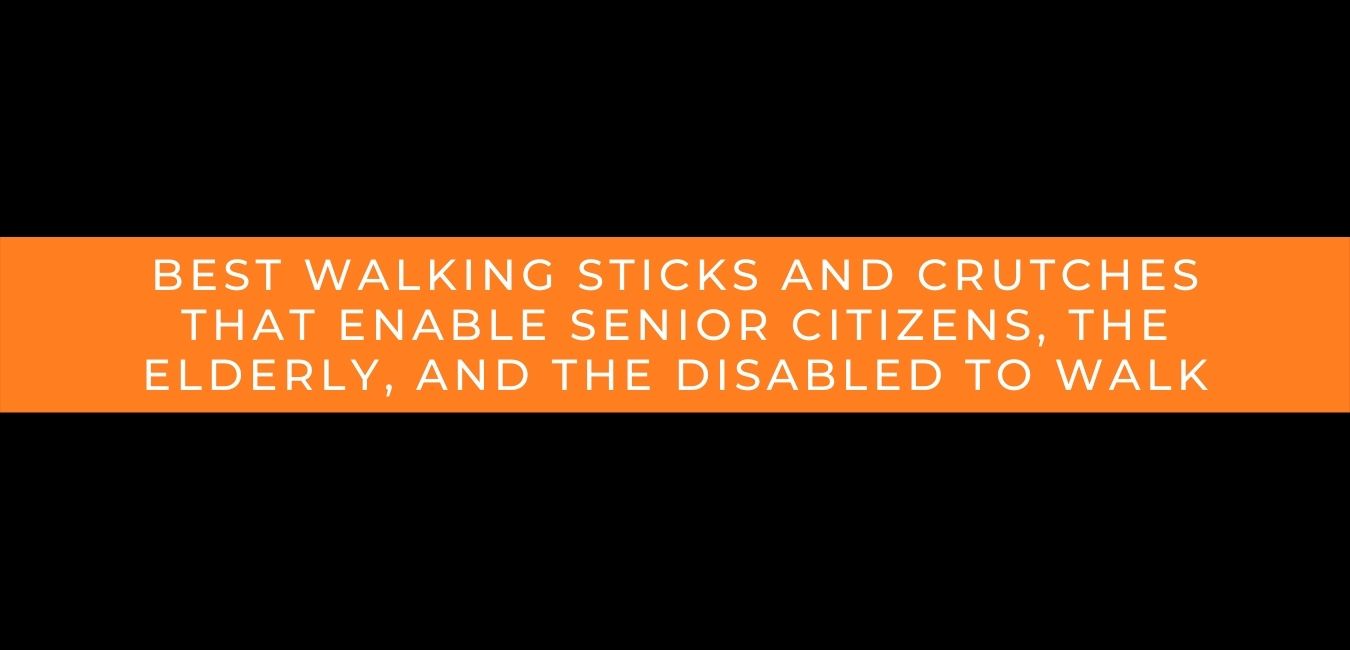Best Walking Sticks And Crutches That Enable Senior Citizens, The Elderly, And The Disabled to Walk

A walking stick and crutches become bosom buddies with senior citizens, the elderly, and the disabled with the haste of time. Senior citizens find it tough to hit on balance and stability as their body functions give up working like they used to. It’s burdensome to lift, bend, curl, and keep pace with their limb though they attempt to call up mobility functions. What’s worse is that the infirmities like osteoporosis, fracture, arthritis, multiple sclerosis, and Parkinson’s disease deteriorate immobility while senior citizens or the elderly age. What are the best walking sticks and crutches that enable senior citizens, the elderly, and the disabled to walk?
Parallel to the painful medical conditions, senior citizens, the elderly and the disabled are vulnerable to falls and unprecedented accidents. Thus, they need to ally with walking sticks and crutches, rebuild balance, and beat up the gait problems. However, retail shops, online markets and shopping malls have varieties of walking sticks and crutches that buyers might be baffled about the options and can’t think of their own. No problem, we’ll sum up the best picks for walking sticks and crutches that aid senior citizens, the elderly, and disable to walk.
How do you choose walking sticks and crutches for senior citizens, the elderly and disable?
Too many options are a way to confuse. So, we’ll be keeping it short; look out for the following features while you shop for walking sticks and crutches.
The handle of a walking stick or crutch is preferable to have a sweat resistant if a sweaty hand slips from the grip, the chances of fall increase.
- The main body of crutches and walking sticks should be sturdy enough to bear the user’s weight.
- Both must have chief functions like adjustable height such that the elderly don’t have to incline too forward or overstretch an arm to reach them.
- The base must be strong enough to support the weight of the user. So, watch out for a tripod or four feet base instead of the single tip.
Best walking stick for elderly, senior citizens, and disabled
In the late sixties, one can feel stumbling on their legs and balance, coherently. A walking stick braces up balance and simple gait problems, diminishing the chances of trips and falls. Similarly, the walking stick is portable; the feature makes it convenient for daily use for older adults.
When one side is at fault, both walking sticks and crutches shift the body weight to the upper part and restore stability. Similarly, their adjustable height allows the user to slide the length of the shaft appropriately.

A walking stick transfers most of the bodyweight to the upper part. A walking stick shifts the load to the upper back and arms if you have a leg injury. It’s not recommended to have a walking stick if your beloved grandmother or grandfather have not-so-strong upper back, wrist and limb simultaneously. Somehow it can be used sparingly.
Quad walking sticks

The bottom of a walking stick has four legs providing a better grip on the ground. They aren’t lightweight; the feature makes a quad cane heavy and robust to render a high degree of stability. If the elderly suffer from limited mobility from multiple sclerosis, severe rheumatism, and neurological disorder, goes for quad tipped walking sticks.
Adjustable walking sticks
Unlikely, wooden sticks don’t possess adjustable pushbuttons. Instead, they are cut down after an accurate measurement. One should look for a walking stick with adjustable height for the elderly who wouldn’t have to bend lower or overextend their arm because of the usual short or tall shafts.
Forearm walking sticks
Is there any walking stick that lessens the strain on the wrist and elbow ? Does any walking stick transfr the lower part’s load to the upper back of an individual? The forearm walking stick also called crutches, reduces muscle tension of the wrist and elbow and transfers support to the upper arm when the upper back resist taking the entire load.
Best crutches for senior citizens, elderly, and disabled
Crutches are divided into underarm crutches and forearm crutches as per their favoritism into armpits or forearms.
Underarm crutches

Also known as axillary crutches, it exerts less strain over the wrist and elbow. It comes in use when your sprained or injured leg provides no usual support as before. When wrongly used, it might affect your axillary nerves and cause axillary nerve dysfunction. Since it demands less upper body robustness and is available readily in the market, underarm crutches are preferred to forearm crutches.
Forearm crutches

Since it exerts pressure on the elbow, it is also called elbow crutches, which consumes time for practice. A forearm crutch has a cuff that attaches to your elbow. It transfers upper body strength into healthy balance and stability. While weighing down both crutches, forearm crutches entail more upper body strength. It requires time for practice until one gets used to it, and advised for disabled. At the same time, it mitigates your lousy posture, back pain, and damage to axillary nerves.
Once you are well-acquainted with walking sticks and crutches, you won’t get worked up watching the varieties in the market.